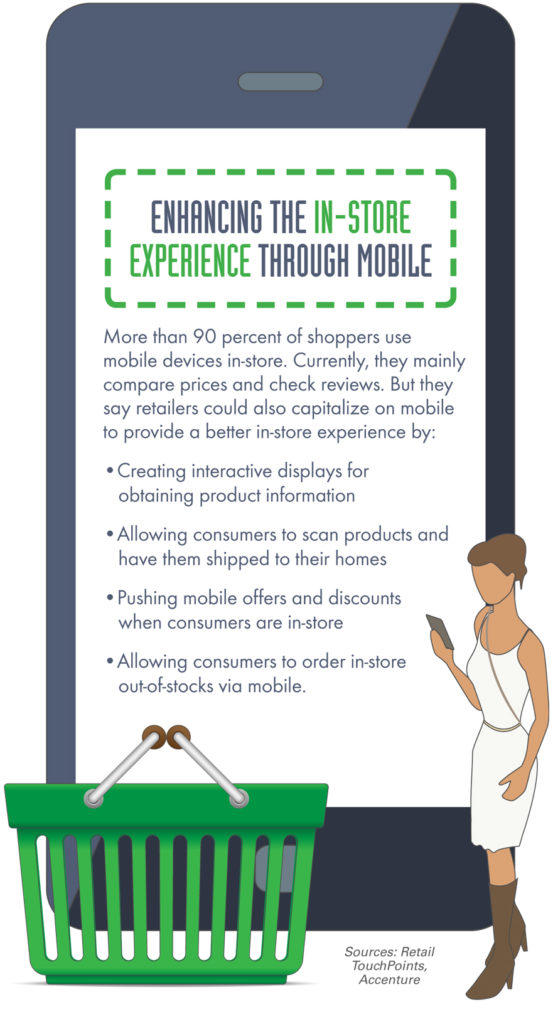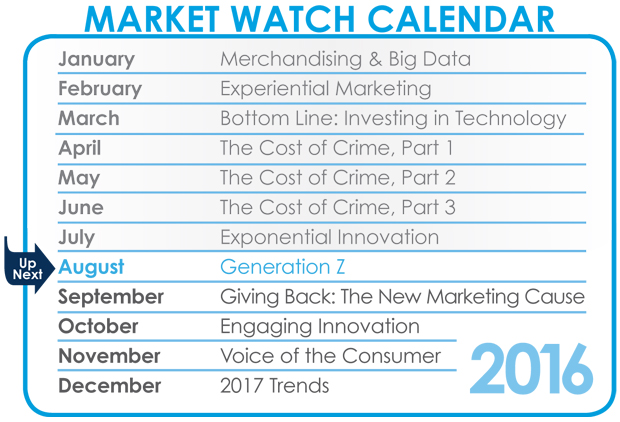By Retail News Insider
The explosion of technology that society has experienced over the past 20 to 30 years has been nothing short of transformational. It’s to the point that the youngest generations are now defined not by world events, but by their use of technology. No one has been immune from this exponential growth of innovation, and that includes retailers. Many of retail’s top trends in the last decade have been driven by technology—think coupon apps, online click-and-collect ordering and mobile wallets.
To learn what’s driving technology innovation in retail today and where retailers and brands are headed next, Retail News Insider sat down with Rekha Ramesh, Senior Vice President of IT for Interactions and Daymon Worldwide.
The Current Wave of Innovation
With the rapid pace of technology advancements, it’s not possible or practical for retailers and brands to chase every trend. So how do they decide what to pursue and how? According to Ramesh, “it’s always consumer behavior that starts technology trends. As consumers’ attitudes and behaviors change, the retail industry evolves to keep up.”
With this in mind, Ramesh points to the following five key consumer trends driving the current wave of innovation.
- Demand for transparency
- Desire for customization/personalization
- Focus on experience
- Rise of social media
- Demand for convenience
Demand for Transparency
“Consumers are more concerned than ever with the impact of the goods they purchase, especially Generation Z and Millennials,” says Ramesh. “This age group is most committed to supporting companies that are committed to positive social and environmental impact.”
For many consumers, this means understanding exactly what ingredients are in a product, where they come from and how the product is made. There is also increased focus on local and fresh produce by socially conscious consumers. And according to Ramesh, the technologies to facilitate this are not particularly new.
PLM (product life cycle management) solutions are one of the key components in achieving transparency. However, PLM alone is not enough. The level of transparency consumers are demanding requires new information standards, integration with end-to-end supply chain systems, levels of collaboration with supply partners and customers, and the stitching together of the multiple data elements needed for a chain of custody.
“With advent of Internet of Things technologies, rapidly falling price of sensors, better GPS data feeds, dropping network costs and ever increasing traceability solutions from technology firms, we are in a perfect storm when it comes to better track and trace of consumer goods,” says Ramesh.
She points to Vermont-based natural cosmetics brand Tata Harper as one company leading the way in transparency. Each Tata Harper product is labeled with a unique batch code. Enter the code on the company’s website and you can see the exact date your product was made and even who made it. You can also virtually tour the company’s lab to see how ingredients are grown, harvested and manufactured.

This system not only satisfies consumers’ demands for transparency, it also encourages longer interactions with the brand. The company reports consumers who use the product tracing tools stay on the website twice as long as other visitors.
Desire for Customization
It’s a well-known fact that consumers are turning away from one-size-fits-all products and services. “They are looking for more personalization and customization options. And they are willing to pay higher price for products which are catered to their needs,” says Ramesh.
There are already numerous examples of customization in the retail space—from brands offering products in a variety of different formats (think single-serving meals, meals for two and family-size) to online retailers allowing shoppers to customize products (such as choosing the fabric design for a shoe). But there is still room for growth—which Ramesh says Big Data holds the key to.
“Used properly, Big Data can help retailers and brands understand consumers’ wants and needs and offer customization at the individual level,” she explains. “It can also help them identify trends for research and development of new products and services for the future.”
Fortunately for retailers and brands, the power of Big Data is quickly becoming more accessible thanks to the cloud. The cloud (or cloud computing) allows companies to store and access their data and programs from remote locations over the internet, instead of having their own infrastructure. It is a much less expensive option, and enables retailers and brands to be more nimble in their response to technology innovations.
Focus on Experience
Many consumers, particularly younger generations, are seeking out retailers that turn the task of shopping into an experience. Sensory stimulation is a particularly effective way to create a memorable experience for consumers, as proven by the success of in-store events and product demonstrations. As the next evolution, retailers are now finding ways to use technology to stimulate the senses—even virtually.
Ramesh points to a grocery chain from Denmark that created a viral video for its new online grocery shopping service featuring fresh fruits and vegetables as musical instruments. The video allows consumers to see and hear the freshness, without ever touching the product. Check it out:
Several major retailers are also beginning to use virtual reality (VR) to create stimulating experiences for consumers. For example, one large home improvement chain is testing out a VR kitchen remodeling program that allows shoppers wearing a VR headset to walk through a 3D mockup of their own kitchen, seeing what different products would look like. With the recent launch of the first commercial VR system, the use of this technology in the retail space is likely to become even more common.
Rise of Social Media
According to the Pew Research Center, social media use has risen more than 10 fold in the last decade. In 2015, 90 percent of Americans ages 18-29 and 77 percent of those ages 30-49 were active social media users. As part of this, consumers increasingly look to social media before buying new products, says Ramesh. “Millennials in particular are looking for validation. Before they buy something, they want to see who else is buying it and what are they saying about it.”

Ramesh points to yogurt maker Chobani as a best-in-class example of how brands can engage with consumers and convert them into brand ambassadors. For example, when the company introduced a new product accompanied by a customized hashtag in 2015, 90% of the social media posts related to the product in the first month came from consumers, not the company itself, according to a study by social analytics firm Simply Measured.
While many retailers now view social media as a necessary platform, Ramesh believes few have yet to fully utilize it. She notes that capitalizing on social media is more than simply posting circulars and responding to comments. Ramesh says retailers should be adding more gamification to their social media efforts and driving more conversion with buy buttons linked to products and recipes. “This would help retailers better understand consumers and drive e-commerce,” she explains.
 Demand for Convenience
Demand for Convenience
Today, not only do consumers expect retailers to have the products they want in stock when they want them, they also expect the shopping experience to be quick and efficient. This is one of the key factors driving the rise of mobile technology in retail.
Many retailers have already begun to integrate mobile into their consumer strategies, offering coupon apps and mobile order/in-store pickup services. Some are also using mobile POS (point-of-sale) systems, which allow consumers to scan items and pay for them with a mobile device—essentially a high-tech version of self-checkout.
But there is still much more for retailers to do. “Retailers have to come up with a mobile strategy to create a seamless experience between the physical store and digital environment,” says Ramesh. Such an experience is currently a rarity, according to a survey by consulting firm Accenture. For example, only 23 percent of retailers offer in-store availability information via their mobile apps—a service that more than a third of consumers want.
The Digital Future
Just as today’s retail technology trends are being driven by consumer behaviors, so too will the innovations of the future. “The biggest thing that is going to drive and further disrupt retail is the connected life,” predicts Ramesh.
As more appliances and products become connected through the Internet of Things, Ramesh ultimately envisions a landscape of hands-free retail where, for example, a connected refrigerator could sense when you’re out of eggs and milk and not simply add them to a shopping list, but actually order them directly from the retailer.
To be sure, the pace of innovation in retail shows no signs of slowing. Whatever the future may bring, retailers and brands can begin preparing now by building an agile IT framework and developing strategies to stay keenly aware of their customers’ ever-changing needs and wants.


